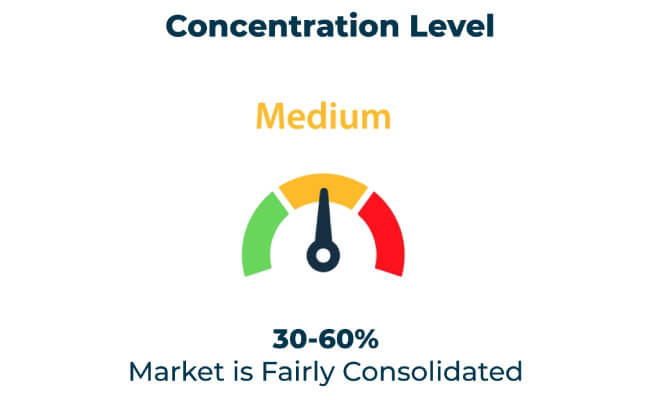The food packaging film market is evolving rapidly as industries demand innovative, sustainable, and cost-effective solutions to ensure product safety, shelf life extension, and consumer convenience. Food packaging films are essential for preserving the freshness and quality of food products while protecting them from external contaminants.
This market will reach USD 122.6 billion by 2035, with a compound annual growth rate of 6.6%. The leading trends are the biodegradable films with technology, smart technologies, and recyclable materials push.
Investments in multilayer films, bio-based polymers, advanced coating technologies, manufacturer collaborations with food and beverage companies to drive alignment with the industry-specific need and sustainability goals.
| Attribute | Details |
|---|---|
| Projected Value by 2035 | USD 122.6 billion |
| CAGR during the period 2025 to 2035 | 6.6% |
Explore FMI!
Book a free demo
Factors Driving Market Growth
The food packaging film market is expanding due to rising consumer demand for fresh, high-quality products and regulatory emphasis on sustainable packaging. Technological advancements further boost market growth.
Global Market Share & Industry Share (%)
| Category | Market Share (%) |
|---|---|
| Top 3 Players (Amcor, Sealed Air, Berry Global) | 17% |
| Rest of Top 5 Players (Mondi, Winpak) | 09% |
| Next 5 of Top 10 Players | 06% |
Type of Player & Industry Share (%)
| Type of Player | Market Share (%) |
|---|---|
| Top 10 Players | 32% |
| Next 20 Players | 38% |
| Remaining Players | 30% |

Year-on-Year Leaders
Asia-Pacific, Africa, and South America present immense growth potential. Low-cost, scalable food packaging film solutions are in high demand in these markets.
In-House vs. Contract Manufacturing
| Region | North America |
|---|---|
| Market Share (%) | 30% |
| Key Drivers | Strong focus on sustainability and e-commerce growth. |
| Region | Europe |
|---|---|
| Market Share (%) | 35% |
| Key Drivers | Advanced recycling infrastructure and stringent regulations. |
| Region | Asia-Pacific |
|---|---|
| Market Share (%) | 25% |
| Key Drivers | Growing middle-class population and rising urbanization. |
| Region | Other Regions |
|---|---|
| Market Share (%) | 10% |
| Key Drivers | Increasing demand for cost-effective solutions. |
The food packaging film market will evolve through innovations in material science, automation, and sustainability practices. Companies prioritizing recyclable designs, bio-based solutions, and smart packaging technologies will lead the industry. Automation and energy-efficient processes will further reduce costs and environmental impact.
| Tier | Key Companies |
|---|---|
| Tier 1 | Amcor, Sealed Air, Berry Global |
| Tier 2 | Mondi, Winpak |
| Tier 3 | Toray Plastics, Uflex, FlexPak |
The food packaging film market is set for steady growth, driven by advancements in sustainability, consumer convenience, and technological innovation. Companies investing in recyclable materials, biodegradable solutions, and automation will gain a competitive edge in this dynamic market.
Key Definitions
Abbreviations
Research Methodology
This report relies on primary research, secondary data analysis, and market modeling. Insights were validated through industry expert consultations.
The food packaging film market encompasses flexible, sustainable, and customizable packaging solutions for preserving freshness, extending shelf life, and ensuring product safety across the food and beverage sector.
Growth is driven by rising demand for fresh and convenient foods, sustainability initiatives, and advancements in flexible packaging technologies.
This market will reach USD 122.6 billion by 2035, with a compound annual growth rate of 6.6%.
Key players include Amcor, Sealed Air, and Berry Global, known for their innovative and sustainable packaging solutions.
Challenges include high production costs, regulatory compliance, and recycling complexities for multilayer films.
Opportunities lie in bio-based material innovations, recyclable solutions, and growth in ready-to-eat and processed food segments.
Jars Market Analysis - Growth & Demand 2025 to 2035
Intelligent Packaging Market Growth & Industry Forecast 2025 to 2035
IV Infusion Bottle Seals & Caps Market Insights - Trends & Forecast 2025 to 2035
High Impact Corrugated Boxes Market Growth – Trends & Forecast 2025 to 2035
Labeling Equipment Market by Product Type, Technology, Labeling Type, End Use Industry & Region - Forecast 2025 to 2035
Kraft Packaging Market Trends - Growth & Forecast 2025 to 2035

Thank you!
You will receive an email from our Business Development Manager. Please be sure to check your SPAM/JUNK folder too.